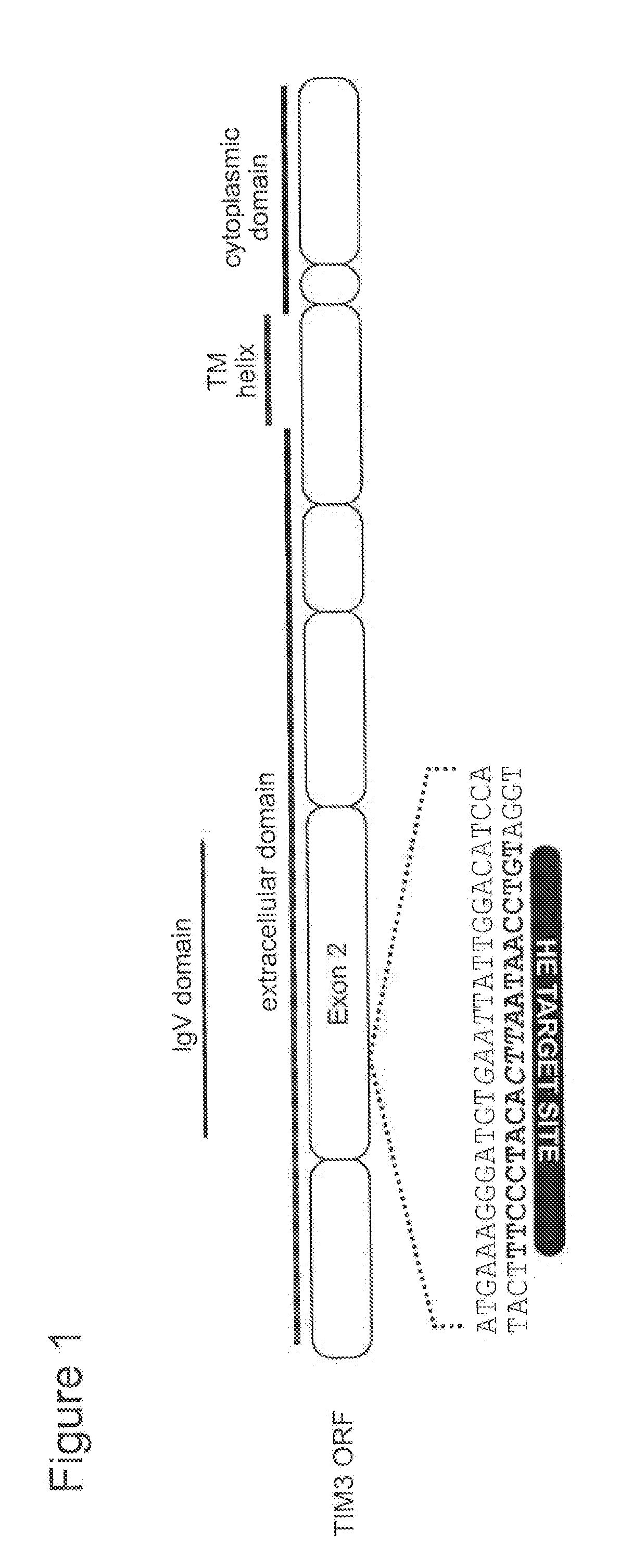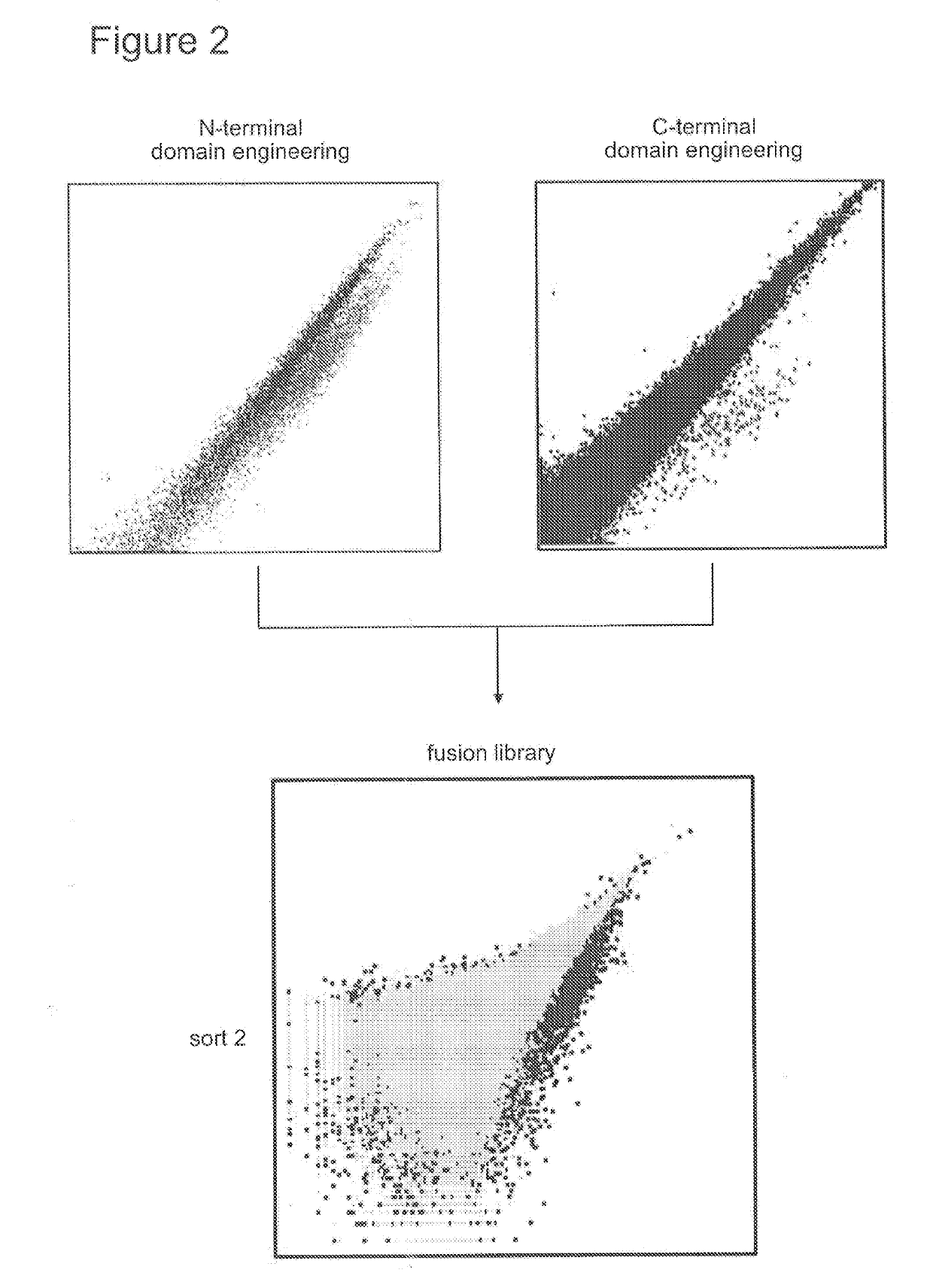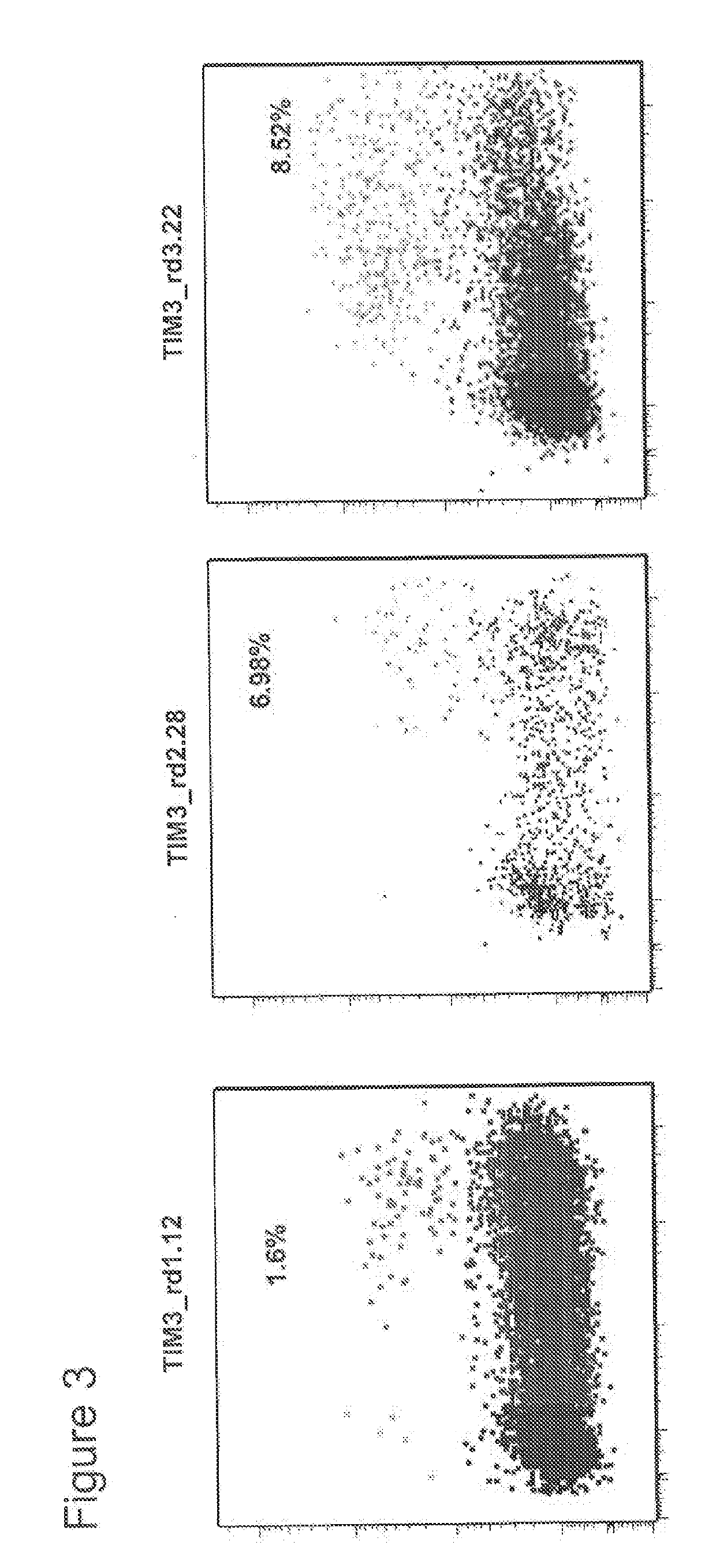Tim3 homing endonuclease variants, compositions, and methods of use
a technology of endonuclease and homing endonuclease, which is applied in the field of nuclease variants, can solve the problems of not having substantial overall success, sporadic cases of disease remission, and treatment is also associated with substantial toxicity
- Summary
- Abstract
- Description
- Claims
- Application Information
AI Technical Summary
Benefits of technology
Problems solved by technology
Method used
Image
Examples
example 1
Reprogramming I-OnuI to Target the Human Tim3 Gene
[0692]I-OnuI was reprogrammed to target exon 2 of the TIM3 gene by constructing modular libraries containing variable amino acid residues in the DNA recognition interface. To construct the variants, degenerate codons were incorporated into I-OnuI DNA binding domains using oligonucleotides. The oligonucleotides encoding the degenerate codons were used as PCR templates to generate variant libraries by gap recombination in the yeast strain S. cerevisiae. Each variant library spanned either the N- or C-terminal I-OnuI DNA recognition domain and contained ˜107 to 108 unique transformants. The resulting surface display libraries were screened by flow cytometry for cleavage activity against target sites comprising the corresponding domains “half-sites” (SEQ ID NOs: 24-25). FIG. 2.
[0693]Yeast displaying the N- and C-terminal domain reprogrammed I-OnuI HEs were purified and the plasmid DNA was extracted. PCR reactions were performed to amplif...
example 2
Reprogrammed I-OnuI Homing Endonucleases that Efficiently Target Exon 2 of the TIM3 Gene
[0694]The activity of reprogrammed I-OnuI HEs that target exon 2 of the TIM3 gene was measured using a chromosomally integrated fluorescent reporter system (Certo et. al., 2011). Fully reprogrammed I-OnuI HEs that bind and cleave the TIM3 target sequence were cloned into mammalian expression plasmids and then individually transfected into a HEK 293T fibroblast cell line that was reprogrammed to contain the TIM3 target sequence upstream of an out-of-frame gene encoding the fluorescent mCherry protein. Cleavage of the embedded target site by the HE and the subsequent accumulation of small insertions or deletions, caused by DNA repair via the non-homologous end joining (NHEJ) pathway, results in approximately one out of three repaired loci placing the fluorescent reporter gene back “in-frame”. mCherry fluorescence is therefore a readout of endonuclease activity at the chromosomally embedded target s...
example 3
Efficient Disruption of Exon 2 of the TIM3 Gene
[0697]The I-OnuI variant TIM3_rd3.22 was formatted as a megaTAL by appending an N-terminal 11.5 TAL array (SEQ ID NOs: 15 and 27) corresponding to an 12 base pair TAL array target site upstream of the TIM3 LHE variant target site (SEQ ID NO: 22), using methods described in Boissel et al., 2013. FIG. 6A. Another version of the megaTAL comprises a C-terminal fusion to Trex2 via a linker sequence (SEQ ID NO: 20).
[0698]TIM3_rd3.22 megaTAL mRNA was prepared by in vitro transcription and co-transcriptionally capped with Anti-Reverse Cap Analog (ARCA) and enzymatically polyadenylated with poly(A) polymerase. The mRNA was purified and used to measure TIM3_rd3.22 editing efficiency in primary human T cells.
[0699]Primary human peripheral blood mononuclear cells (PBMC) were activated with anti-CD3 and anti-CD28 antibodies and cultured in the presence of 250U / mL IL-2. At 3 days post-activation cells were electroporated with TIM3_rd3.22 megaTAL mRNA...
PUM
| Property | Measurement | Unit |
|---|---|---|
| Fraction | aaaaa | aaaaa |
| Fraction | aaaaa | aaaaa |
| Fraction | aaaaa | aaaaa |
Abstract
Description
Claims
Application Information
 Login to View More
Login to View More - R&D
- Intellectual Property
- Life Sciences
- Materials
- Tech Scout
- Unparalleled Data Quality
- Higher Quality Content
- 60% Fewer Hallucinations
Browse by: Latest US Patents, China's latest patents, Technical Efficacy Thesaurus, Application Domain, Technology Topic, Popular Technical Reports.
© 2025 PatSnap. All rights reserved.Legal|Privacy policy|Modern Slavery Act Transparency Statement|Sitemap|About US| Contact US: help@patsnap.com



